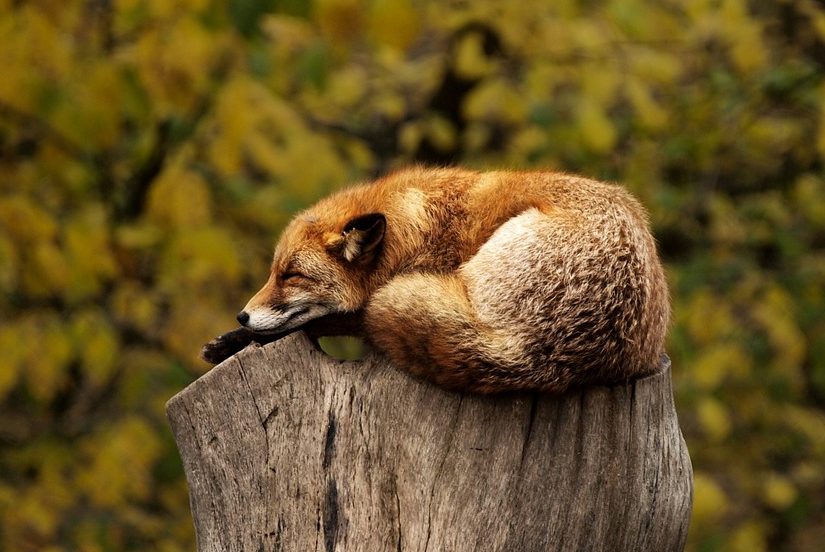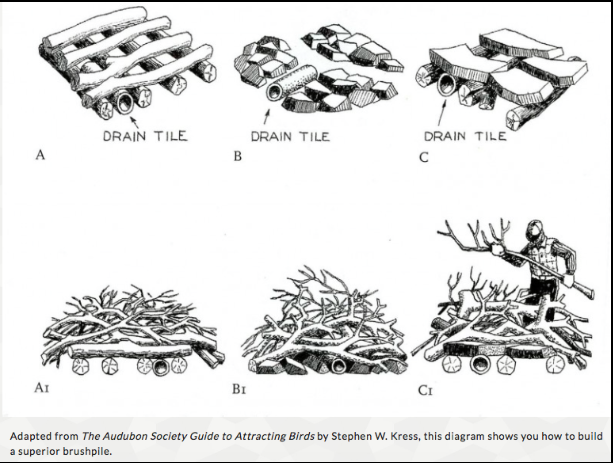By Nicole Tabit, Clean Water Fellow
Avoid fall yard work- for a good cause. Following the tips below, you can drastically decrease the amount of yard work you need to do at the end of every summer, and help critters thrive in the winter! 
Leaving your leaves on the lawn helps provide habitat for backyard animals in the late autumn and through the winter. Small mammals, toads, turtles, birds and more use leaf cover as habitat during the cold months. By letting leaf litter lie, they protect plant roots, provide habitat, and provide nutrients for your soil and the critters that live in it. Leaf litter accounts for 13% of solid waste, according to the EPA, and it shouldn’t be burned either, as it lowers air quality.
How can you make the most of your leaves? Try leaving them as they fall. If the leaf layer is too thick, mulch them by mowing your lawn, and letting the leaf bits stay on the ground. If you have a manageable amount of leaves, they can also be added to a compost pile for extra nutrients.
Besides letting the leaves stay on your lawn, you can save some seeds. When you leave seed heads on the plant, or on the ground, this provides valuable food for birds and mammals in the winter. The best seeds are native wildflowers, like Black Eyed Susans, Coneflowers, and even native ornamental grasses.
 Another option is to build a brush pile, which even better habitat for a wide variety of animals. You can easily do this in your backyard to increase biodiversity and bring in some natural habitat. The shelter will gradually decompose and return nutrients to the soil, but in the meantime, provides animals a nesting place and chances to find food.
Another option is to build a brush pile, which even better habitat for a wide variety of animals. You can easily do this in your backyard to increase biodiversity and bring in some natural habitat. The shelter will gradually decompose and return nutrients to the soil, but in the meantime, provides animals a nesting place and chances to find food.
How to make a brush pile: Cut or gather a colleciton of limbs and branches. Some shuld be at least four to six inches in diameter. Arrange some of your branches parallel on the ground, with space between to crate tunnels for larger birds. Any wood will do, but a bottom layer of rot-resistant locust or oak will prolong the brush pile's life. For the second level, place your next largest branches at right angles to the first, log-cabin style. Continue criss-crossing branches to a height of three to five feet. Weave the wood together to make a stable construction. Your pile doesn't have to be perfectly neat. Irregularity provides a matrix of spaces for a variety of species. 
As you get to the top, work in smaller material, arranged more densely. Finish with a thick, layered roof of evergreen branches to conceal the interior. In winter, snow will crust on top and form chambers as snug as an igloo. After the holidays, add boughs from discarched Christmas trees for extra instalation. Make your brush pile loose at the outside, so birds can get in easily and quickly. The center should be tighter, to provide small refuges where a bird can escape predators.
Not only will this new habitat shelter present wildlife, it will also attract new wildlife! These natural brush shelters are an excellent environmentally friendly addition to the suburban landscape, since they are made of natural materials. Leaves and other plant matter that catch on the shelter will decompose naturally and return nutrients to the soil (as well as provide food for insects and earthworms). Proper habitats allow wildlife to have safe access to food, and nesting areas, too.